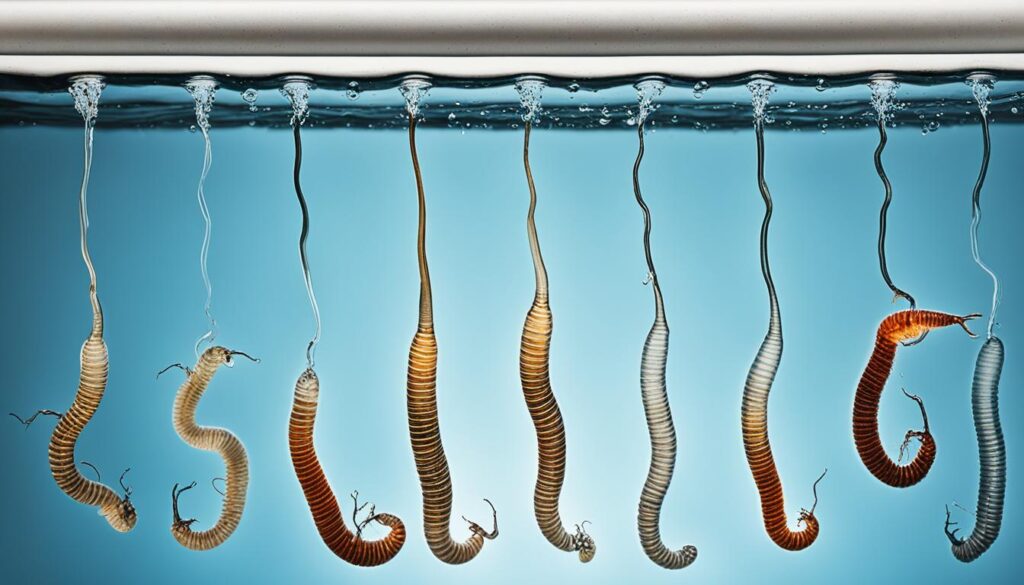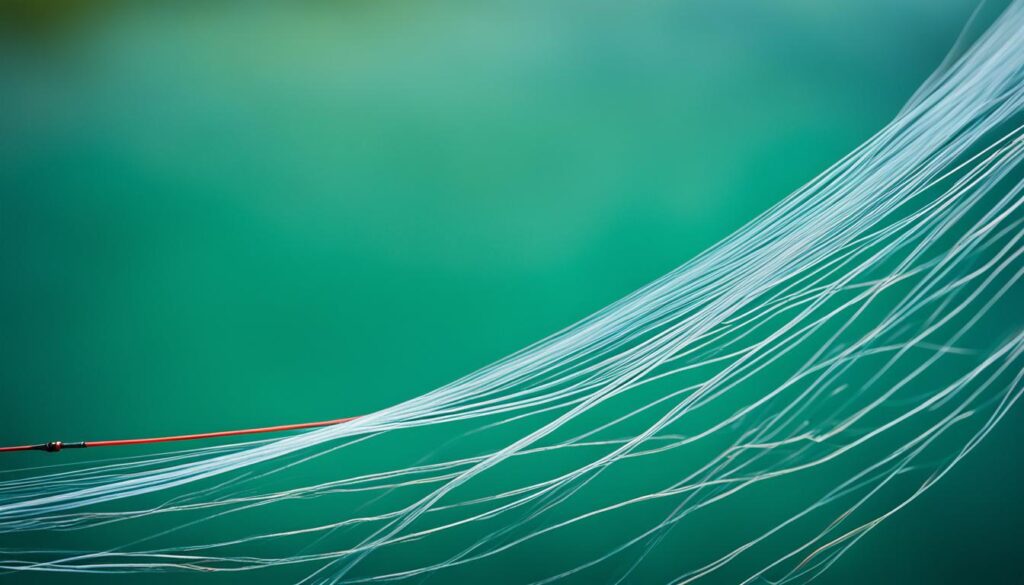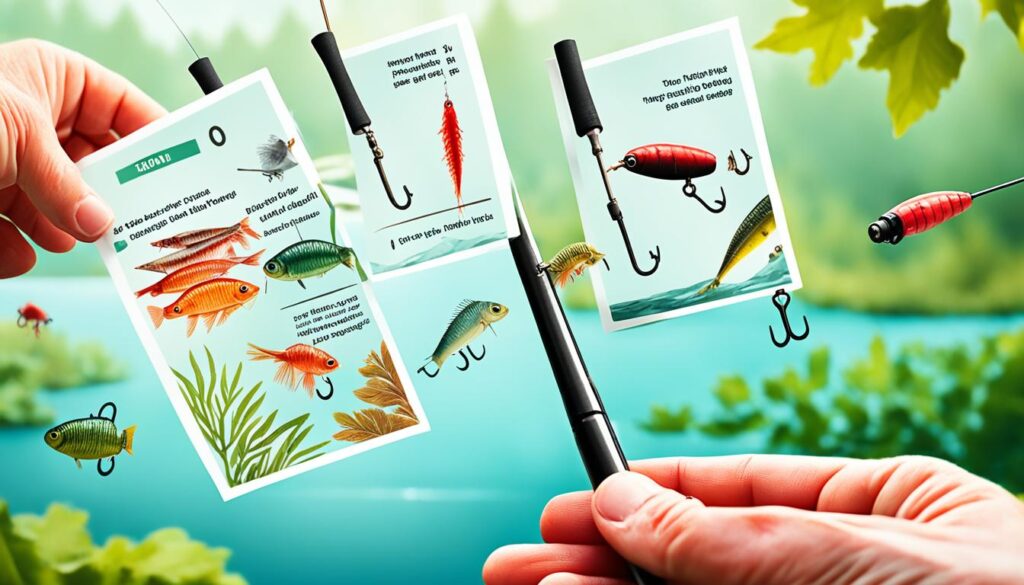Want to improve your bass fishing with plastic worms? Pro angler Larry Nixon shares essential worm fishing tips you may need to learn. Learn how pegged sinkers, hook selection, and sinking speed can enhance your success. Larry will also cover the best rods for worm fishing, the advantages of fluorocarbon lines, and techniques like bouncing your worm and using tungsten sinkers to catch big bass.
Key Takeaways:
Plastic worms are great for catching bass.
Pegged sinkers make a difference in how well you hook fish.
Choosing the right hook for casting and pitching is critical to success.
Knowing about different plastic worms helps a lot.
The speed at which your worm sinks is vital for more bites.
Secret 1: The Impact of Pegged Sinkers on Fish Hooking
Pro angler Larry Nixon notes that while pegged sinkers help with casting into cover, they can also lead to missed catches because they might prevent a bass from fully biting the worm. He suggests letting the sinker slide freely on the line to mimic natural prey movement, making the bass more likely to strike. Understanding when and how to use pegged sinkers can significantly improve your worm fishing success.
| Advantages of Pegged Sinkers | Disadvantages of Pegged Sinkers |
| Improved accuracy in casting into cover | Potential for missed bites due to fish hooking issues |
| Ensures the weight stays in place | May create unnatural presentation |
| Helps keep the worm near the target area | Increased risk of bass sensing the line |
Secret 2: The Importance of Different Hooks for Casting and Pitching
Your casting and pitching hooks shouldn’t be the same
Indeed, everyone does it for a reason. We pitched at one shallow pillar, ran down the riverbank, and started dragging in a brush. Even though that may seem more straightforward, Nixon warns against doing so. Nixon added that if you cast your worm without a straight hook, the hook will never be right in the water. Rotaworm – barrel Hook provides worm casting a much better profile. The rubber worm slides off of a hook a second time on one hook, which results in a suitable plastic penetration and good penetration.
Casting Hooks
Nixon picks straight shank hooks, like the Roboworm Rebarb Hooks, for casting. These hooks make the worm look better and hook fish easier. They are great for accurate casts, ensuring the worm goes where you want it.
Pitching Hooks
For pitching, Nixon likes thin wire 5/0 Gamakatsu Offset extra wide gap Worm Hooks. They’re perfect for getting through covers and grabbing bass well. Their thin design helps in hooking fish properly, giving you a higher chance of catching them.
Picking the correct hooks for casting and pitching improves your fishing game. These recommended hooks will prepare you for different fishing situations. By following Nixon’s advice, you’re set for success.
Secret 3: Understanding the Versatility of Different Plastic Worms
Understanding the versatility of different plastic worms is crucial to successful worm fishing. Larry Nixon, a renowned angler, highlights the optimal use of straight tail worms and curly tail worms.
Straight tail worms shine in various fishing situations. With unique sinking characteristics and erratic action, they effortlessly move through cover. They’re a favorite among anglers for their flexibility. Trying specific models like the Yamamoto 6.75-inch Long Pro Senko is advised to get the best out of straight-tail worms. These worms are made to perform well in different fishing scenarios, offering a dependable bait option for catching bass.
Curly tail worms, crafted for thriving in vegetation or heavy cover, mimic a realistic swimming action. This makes them highly appealing to bass hiding in these spots. Larry Nixon suggests the Yamamoto 12-inch Curly Tail Worm for these conditions. Its lifelike swimming action increases the likelihood of attracting bass.
Plastic Worm Versatility Guide
| Plastic Worm Type | Suitable Situations |
| straight tail worm | Versatile – can be used in various conditions |
| curly tail worms | Fishing in vegetation or heavy cover |
Secret 4: Understanding the Importance of Fall Rate in Getting More Bites

The fall rate of your worm is crucial for fishing success. For clear water, use a 5/16 or 3/8-ounce weight for a quick descent, which mimics natural prey and attracts bass. In murky water, opt for a 3/16 to 1/4-ounce weight for a slower fall, making it easier for bass to detect and strike the worm.
The appropriate weight depends on water clarity, current speed, and bass activity. Start with a 3/16 to 1/4-ounce weight to experiment and adjust based on these factors, enhancing your worm’s lifelike movement and improving your catch rate. Keep experimenting and refine your technique based on what works.
Fall Rate Recommendations
| Water Condition | Weight |
| Clear water | 5/16 or 3/8-ounce |
| Dirty water | 3/16 to 1/4-ounce |
Secret 5: Using the Right Rod for Worm Fishing
Finding the best bottom rod tip is critical for excellent worm fishing. A pro angler, Larry Nixon says sensitivity and a strong backbone are crucial. Sensitivity lets you feel soft nibbles, so you don’t overlook bites. A strong backbone gives you the power to catch big fish and pull them out of hiding places.
Larry Nixon prefers to use the 7-foot, medium-heavy Dobyns Champion Extreme Casting Rod for worm fishing.
Choosing a top-notch worm fishing rod makes a big difference. It lets you sense bites better and catch the fish you want. Plus, the strong backbone helps when fish escape hiding spots.
Benefits of a Sensitive Worm Fishing Rod
There are big pluses to a sensitive worm fishing rod:
Enhanced Bite Detection: You can feel even the gentlest strikes, which helps you hook the fish fast.
Precision Fishing: Being sensitive allows you to control better your bait, which helps you guide it through tricky spots.
Reduced Missed Bites: With improved sensitivity, it’s easier to tell bites from snags, missing fewer chances to catch fish.
The Importance of a Solid Backbone
Rods with a solid backbone are crucial for worm fishing because:
Control and Power: They give you the power to manage big fish and keep them from escaping.
Less Hook Slippage: A strong backbone ensures the hook stays in place, lessening the chance of fish escaping.
Improved Casting Distance: These rods let you cast farther, reaching spots where fish may be lurking.
Secret 6: The Benefits of Using Fluorocarbon Line and Proper Line Maintenance

Choosing the right fishing line is crucial for success in worm fishing. Larry Nixon recommends using the Seaguar InvizX Fluorocarbon line for its strength and near invisibility underwater. A 15-pound test line is a good general choice, but a lighter 12-pound line for clear waters can make your lure less noticeable and more effective. In thicker areas or with larger weights, a tougher 20-pound line is better suited for bigger fish and rough conditions.
It’s also essential to maintain your line well. Stretch your line before fishing to reduce memory and improve casting distance. Always wet the knot before tightening to prevent damage and ensure a firm hold. Be careful not to overfill your reel to avoid line twists and other issues.
Benefits of Fluorocarbon Line:
- Increased invisibility underwater
- Enhanced sensitivity for detecting subtle bites
- Improved strength and durability
- Minimized line memory and reduced tangles
Proper Line Maintenance Tips:
- Stretch the line before each fishing trip
- Wet the knot to prevent burning
- Avoid over-spooling the reel
Secret 7: Hopping Your Worm to Cover Water Quickly
Not all plastic worms are the same
For worm fishing, it must be clear in what situations the particular worm is best suited. The green worms that twitch and move do not make any difference. Straight tail worms—Straight tail worms are certainly the versatile ones that exist in nature,” he added.
Larry Nixon offers an excellent secret for better worm fishing. Instead of slowly dragging your worm, try hopping it. This technique helps you move quickly and find the best spots for fishing.
To hop your worm, move and drag it quickly about two feet up, then let it fall. This action looks like real prey moving and can get bass to bite. You can cover water as fast as with a spinnerbait and have better chances to catch fish.
When hopping your worm, look for places like brush piles and break lines to slow down. Taking your time in these spots can pay off. This technique lets you quickly figure out where the bass are hiding.
Hopping your worm will help you cover water quickly
When most bass fishing people began using plastic worms, the instructions were to drag and roll. You may get fish with a retrieve, but hopping is the best option to cover water and create a productive pattern. Then he will be able to keep Nixon in check all year around, and the Bassmasters have been keeping a close watch throughout. Often, a worm bites him at his feet. Nixon said.
Why Hopping Your Worm Works
“Hopping your worm can make bass strike because it resembles escaping prey. It’s a tempting target they can’t ignore.” – Larry Nixon
Conclusion
Worm fishing with plastic worms is a highly effective way to catch bass. Professional angler Larry Nixon has shared valuable secrets to improve your fishing success fish plastic worms. By using these tips, you can boost your confidence on the water.
To succeed in worm fishing, it is crucial to understand a few key tactics. It is important to know when to use pegged sinkers, the right hooks for different actions, and the various types of plastic worms. Also, paying attention to how fast your worm sinks, choosing the appropriate rod and line, and learning to hop and retrieve your worm will attract more fish.
You can start using these worm fishing strategies and secrets in your fishing routine. With Larry Nixon’s expert advice, you’ll grow your skills and catch more fish. These changes will make your fishing trips more productive and fun.
FAQ
Do you use a weight with a plastic worm?
Professional angler Larry Nixon says pegged sinkers can lead to misses with plastic worms. Having the sinker move freely increases your hooking chances.
Why is it important to use different hooks for casting and pitching?
Various hooks suit casting and pitching differently. For casting, Roboworm Rebarb Hooks are best. Use thin wire 5/0 Gamakatsu Offset Extra wide gap Worm Hooks for pitching into cover.
What should I know about the versatility of different plastic worms?
Straight-tail worms, like the Yamamoto Long Pro Senko, excel in many situations. Curly-tail worms, like Yamamoto’s Curly Tail Worm, are great for dense vegetation.
How does fall rate affect getting more bites?
Your worm’s fall rate is key to attracting strikes. Try different weights to find the perfect fall rate for bass worms in various conditions.
How to set up a rod for worm fishing?
Please be sure to look for a sensitive rod with a strong backbone. Sensitivity helps detect light bites, while a strong backbone is necessary for landing big fish and pulling them out of cover.
Why should I use fluorocarbon line for worm fishing?
Fluorocarbon, like 15-pound Seaguar InvizX, is ideal for worm fishing. It enhances sensitivity and is less visible underwater, which increases bite rates.
What is the best way to fish a plastic worm?
You can move quickly by hopping your worm, which mirrors a spinnerbait’s action. Just give a short two-foot hop, then let it fall back down. This technique helps find active fish.
What are some tips for improving my worm fishing success?
Follow Larry Nixon’s advice for better bass fishing. Know your sinkers and hooks. Master different worm types and fall rates. Choose the right rod and line. Try hopping your worm. These tips will up your game.
